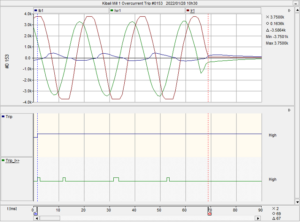To answer this question, we need to start by answering:
What is the difference between ‘Starts per hour’ and ‘Number of consecutive starts’?
How can it used to specify an LRS for an 8MW Ball mill at an ambient temperature of 42°C?
A) Starts per Hour
* “Starts per Hour” is defined for the purposes of this document as the rate at which the mill will be able to start ad infinitum, while the ambient remains at the specified value. The values below are for an 8MW mill with a 5000 liter tank LRS, cooled by stirrer (water side) and natural convection (air side of tank wall.)
* For natural convection with a stirrer or circulating pump:
ΔT=5°C results in 0.08 starts per hour. (once every 12 hours)
ΔT=10°C results in 0.14 starts per hour (once every 7 hours)
* With our air-blast cooler:
ΔT=5°C results in 1.6 starts per hour.
ΔT=10°C results in 2.8 starts per hour
* In this case the ambient temperature is 42°C, therefore the working temperature would be:
ΔT=5°C: Working temperature 47°C
ΔT=10°C: Working temperature 52°C
* This is representative of any LRS utilizing a 5000 liter tank. Although the values may vary slightly depending on the tank surface and the exposure to wind, the main variables are determined by physics and verified with empirical measurements at many sites.
The heat input during start is determined by the characteristics of an 8MW ball mill. These results are therefore independent of manufacturer of the LRS and will remain true, even though it is usually not correctly specified on the data sheets of the LRS.
If you want to quote one or two starts per hour, there is no way you can do it honestly without a cooler. Else you must quote several hours per start.
B) Number of Consecutive Starts with a Normal LRS
If you want to start up at a constant torque, you need to start up at constant water temperature.
There is not much tolerance on the start-up torque of a Ball mill, both too high and too low starting leads to problems.
With a normal LRS, we would only recommend starting a Ball mill between 130% and 140%.
An 8MW ball mill will typically increase the water temperature by 3°C and the torque with roughly 6.6% on each start-up.
If we therefore control the water temperature as above, at 52°C for 130% start-up to get a decent ΔT=10°C, the start-ups will look as follows:
| Start-up number Water | Start-up number Water | Start-up number Water |
| 1 | 52°C | 130% |
| 2 | 55°C | 138.6% |
| 3 | 58°C | 147% |
The second start-up will be at 138.6% and the third at 147% of rated, already a very high start-up torque.
* We will therefore highly recommend that you do not do more than 2 consecutive starts with a normal LRS, if you are starting an 8MW Ball mill, regardless of what the LRS manufacturer specifies.
Number of consecutive starts with an LRS with Dipper movement control
With dipper movement control, it is possible to start a mill at a much lower torque, and still have smooth mill acceleration with ore-lifting capability equivalent to a normal LRS starting at 140%.
The biggest advantage of this is the reduction of locked charge risk, and lowering of torque spikes on the gearbox and girth gears.
Dipper movement control also has the advantage of increasing the number of consecutive starts.
Contact us if you are interested in this option.
C) Conclusion
It is possible to increase the allowable number of consecutive starts tremendously using proper dipper speed control in conjunction with temperature control, which should be adequate for many applications.
However, if a continues start-up duty in the order of one or two starts per hour is required, a cooler is required.






